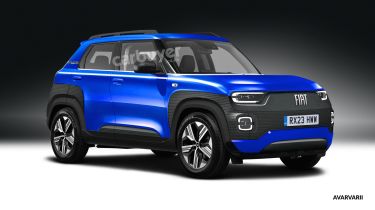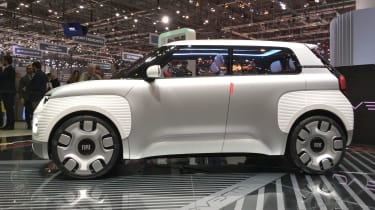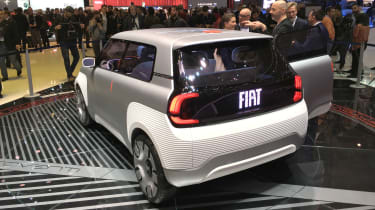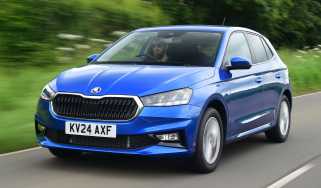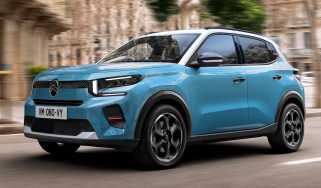New 2024 Fiat Panda: latest details
The next-generation Fiat Panda is expected in 2024, taking inspiration from the Centoventi concept and offering a cheap EV version
- New car previewed in exclusive images
- Panda may come with petrol and electric powertrains
- Minimalistic design with focus on affordability
After several years of underinvestment meaning the petrol-powered Fiat 500 and Fiat Panda have continued on with ageing technology and powertrains, the Italian brand looks to be making something of a comeback in recent times, unveiling a slew of new models including the retro-inspired 600e electric crossover, and the Topolino quadricycle based on the Citroen Ami. Now, it’s rumoured an all-new Fiat Panda will arrive potentially as soon as mid-2024, and our exclusive renders show what it could look like.
 The smallest cars on sale in 2025
The smallest cars on sale in 2025
On 11 July 2024, the brand’s 125th birthday, Fiat is set to unveil yet more affordable cars to take on budget-friendly rivals Dacia and the lower-end of Hyundai and Kia’s lineups with their i10 and Picanto city cars. Fiat has hinted that its latest new model could be a Panda-inspired car, and it could take heavy inspiration from the minimalistic Centoventi concept car unveiled in 2019.
Dacia has more recently announced its Spring affordable EV will come to the UK, and Fiat will no doubt be aiming to take this on with a rival cheap EV. The Panda’s position as a small, affordable, yet slightly more practical version of the 500 could mean it makes a comeback in EV form, too, although petrol versions could also form the basis of entry-level models, likely making use of the 1.2-litre PureTech unit used in various Peugeot and Citroen cars under the Stellantis mothership.
Fiat has been tight-lipped about the potential for other iconic small Fiat names, such as the Punto, Tipo and Uno to make a return, but hasn’t ruled out having multiple models in the B-segment.
The brand has confirmed, however, that its upcoming models would be between 3.6 and 4.5 metres long, and that what will draw people away from rival Dacia will be the extra Italian flair associated with its cars.
When we spoke to Fiat CEO Olivier Francois, he was quoted as saying “We are focused on making something simple, cool, joyful, you know, a little bit special. We have this DNA, and maybe we can take some design cues from the Panda and the 1980s and bring that back to life – a simple car made by the Italians is not a punishment but a joy; a simple car made by anyone else is a punishment.”
Since Fiat became part of the Stellantis Group – the parent company of brands like Peugeot, Citroen and Vauxhall – it’s able to make use of a wider range of platforms and parts to help keep costs down. It’s unlikely that extravagant features of the Centoventi Concept, such as swappable batteries, will feature, but simplicity will be key.
Francois has mentioned that buyers may have to forgo some extra safety kit to sell the Panda at a competitive price, saying "The challenge is not technical – we can add all the equipment to get the stars – but the question is whether customers want to pay for it", with the brand omitting fancy features buyers can live without, such as autonomous driving.
2019 Fiat Centoventi concept
The Centoventi concept featured expandable battery packs that can be slotted in and out to extend its range up to 310 miles. The car is said to express Fiat's plans for "electric mass mobility in the near future”.
Launched as part of Fiat's 120th-anniversary celebrations, the EV will "democratise" electric mobility, being "affordable and cool", according to Fiat. The four-seater has modular batteries, developed in conjunction with Samsung, that attach to a sliding rail within the car and can be connected together at the dealership.
Inside, the Centoventi is "decontented" and described by Fiat as a "blank canvas", with a white surface covered in indentations where the dashboard would usually be. Countless accessories can be attached to this depending on the owner's needs, including a phone and a tablet device that can be connected to the car, functioning as its infotainment system. Alternatively, customers can opt for a more traditional 10-inch infotainment screen, paired with a 10-inch instrument cluster for a 20-inch "Lingotto 20" widescreen infotainment display.
The personalisation continues with the passenger seat, which can be removed to make way for a child seat, pet carrier or workstation, depending on the priorities of the driver. Almost every aspect of the seats themselves can also be changed, from the colours, to the shape, to the thickness of the foam.
The concept is finished in a single colour "similar to treated metal plate" to simplify production, while its bumpers are made from expanding foam designed to soak up knocks. Customisation will be achieved with four roofs, four bumpers, four wheel covers and four 'wrapping films' to make cars unique. Its nose also features four battery-charged LEDs designed to look like classic Fiat vents.
The wrapping of the car can be performed at dealerships at any time and "is very fast, courtesy of the remarkably linear and flat exterior surfaces, and low cost." As standard the Centoventi has an open roof, closed by a "cap", while a canvas roof and a roof with a solar panel will also be available. This can generate up to 50 watts on a sunny day, keeping the car cool or powering a rear display. This screen on the tailgate can be used to display messages, replacing the Fiat logo when parked. These messages can range from content from social media to advertising, “which can be rented out to advertisers to recoup the cost of parking".
Read our Fiat reviews here.
Recommended

SEAT releases new Black Edition models with sportier styling
Most Popular
Tips & advice

Car dashboard warning lights: what does each symbol mean?

Electric car charging stations: public networks, charger types, apps and maps


